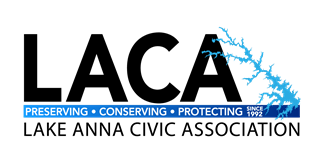By Bill Hariu – November 2025
Why Winterize?
As I write these suggestions, I know many of you are experienced boaters and PWC owners who have already winterized and have your own process and / or through a qualified professional mechanic. This article is a gentle reminder of winterizing recommendations.
Proper winter maintenance in Virginia is essential to protect boat / PWC engines and systems from freeze damage. Key recommended steps include engine preservation, protecting plumbing, and securing the vessel for offseason storage.  The answer boils down to water. Fresh water expands by about 9% in volume when it freezes and can push outward with tens of thousands of pounds per square inch of pressure. It’s no surprise, then, that around three-quarters of boat / PWC freeze insurance claims involve cracks in the engine block or exhaust manifolds because water remained in the cooling system or engine during a hard freeze.
The answer boils down to water. Fresh water expands by about 9% in volume when it freezes and can push outward with tens of thousands of pounds per square inch of pressure. It’s no surprise, then, that around three-quarters of boat / PWC freeze insurance claims involve cracks in the engine block or exhaust manifolds because water remained in the cooling system or engine during a hard freeze.
Other damaged boating or PWC components may include fiberglass, hoses, plumbing and even refrigeration and don't forget the air-conditioning system if your boat has one.
What To Winterize:
In a nutshell, generally, anything that uses water for cooling or carries water for use on board needs to be winterized. Proper winterization means removing all water from the boat or PWC engines and systems and/or replacing it with the correct type of approved NONTOXIC antifreeze. How this is done and how long it takes varies by boat / PWC model and type of systems you have. For any plumbing systems aboard (e.g. fresh- and raw-water hose downs, water heaters, freshwater tanks, heads, includes holding tanks, pumps, shower sumps, sinks, and even seacocks) if recommended you may need to replace the water with an approved NONTOXIC antifreeze per your vessels manufacturing / specific system guidelines.
Simply draining the system isn’t enough because it’s nearly impossible to remove all water. Every boat and PWC model is different, so follow all manufacturer recommendations for winterizing your specific engine and your specific systems aboard.
What other Systems Need to Be Addressed?
Fall is also the perfect time to do your annual oil changes and transmission fluid, on your engines per manufacturing guidelines. Make sure your to-do list includes if recommended for your specific model:
• Any oil change and cylinder fogging for engines and generators.
• Lower-unit gear-lube change for outboards or sterndrives.
• Topping off the fuel tank, adding stabilizer or biocides as needed.
• Inspection of anodes and running gear.
• Washing the exterior of the boat to remove salt and dirt and getting the cockpit or other exterior drains cleared.
• Make sure batteries are fully charged, or better yet, remove them where they can be stored indoors and given a booster charge from time to time to keep them topped up.
What's Left to Do other recommendations?
Your boating gear, and all the stuff a boat tends to accumulate over the season, will be more likely to stay clean, dry, and mildew free if you take it home and store it there. Additionally, gear that's not on the boat is gear that's not there to be stolen during those quiet months when the boatyard is largely empty or your boat is at home in the yard or boathouse
Consider:
• Removing bracket-mounted electronics, even if they're in the cabin or pilothouse.
• Taking big-ticket items, like the dinghy, outboard, or kicker off the boat. Same goes for paddle boards and large water toys you might store aboard.
• Removing rods, reels, and tackle, which are favorite targets for thieves.
• Taking home spare clothes, cushions, canvas awnings, bedding, life jackets, and anything else likely to mildew.
• Wash it all and make sure it's all salt-free and dry before storing. Put a lubricant on snaps and zippers, so they don't seize up over the storage season.
• Adding a GPS tracker to your trailer able boat for remote monitoring. For as little as $99, it can keep an electronic eye on your boat when you can't.
• Block your trailer up off the ground and remove the tires. This will not only deter thieves but also make trailer tires last longer.
How you answer these questions will dictate how much time, energy, and money you spend, and many of us gladly trade the latter for more of the former. Having a plan and preparing your boat well will mean getting back on the water sooner come spring.
Who Should Do the Work?
If you know what tasks need to be done for your boat or PWC and you’re comfortable doing them, there’s no reason you can’t winterize your boat yourself.
However, if there’s any question about what needs to be done or if you have an insurance endorsement for ice and freeze damage, you’ll need to hire a qualified marine professional.
bill.hariu@lakeannavirginia.org

